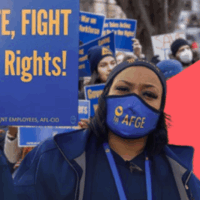In 2014, the sandwich chain Jimmy John’s made the news for requiring its sandwich makers to sign non-competition provisions (“non-competes”) as a condition of continued employment.[i] This practice brought the issue of non-competes for workers in low-wage industries into the national conversation.[ii] Shortly thereafter, a number of other stories emerged of worker non-competes, including Amazon delivery, cleaning services, janitors, and journalists.[iii] New York’s Attorney General (NY OAG) settled its investigation into the use of non-competes by Jimmy John’s stores in New York and the corporate entity in 2016. Soon after that, the NY OAG opened investigations into the use of non-competes at two more companies. Last week both the NY OAG and the Illinois Attorney General completed an investigation of WeWork, a national co-working company that bound nearly all of its employees with these provisions.[iv]
Recent research on the proliferation of non-compete provisions is troubling. Non-competes are agreements that employers demand as a condition of accepting a job that bar the employee from taking a job with a competing employer in the same industry for a period of time (often a year or more), following the end of their job with their current employer. While some non-competes are limited by industry or geography, some are very broad, covering entire regions of the United States. Many non-competes also require that employees inform their employers of their prospective new positions and obtain approval for the new position. In about half of states, even laid-off workers or those fired without cause can be subject to non-competes.[v]
Over the years, employers seeking to insulate themselves from labor market competition in their hiring have begun to use non-competes far more widely. Previous understanding of non-competes was that they were used solely for highly compensated executives. However, they are now used throughout the workplace.
The rationale that employers use to justify these limits on their employees is to protect against the disclosure of valuable trade secrets to competitors. However, this rationale at best applies to skilled and generally highly compensated employees, such as engineers or executives, who in their employment acquire significant trade secrets. Moreover, even for such workers who have access to trade secrets, a more appropriate legal tool for protecting such intellectual property is to prohibit employees from disclosing such information, through non-disclosure conditions. Non-disclosure conditions are widely used in employment contracts and may provide a more tailored approach for addressing this concern.
Over the years, employers seeking to insulate themselves from labor market competition in their hiring have begun to use non-competes far more widely. Previous understanding of non-competes was that they were used solely for highly compensated executives. However, they are now used throughout the workplace. In March 2016, the U.S. Treasury issued an economic policy report titled “Non-Compete Contracts: Economic Effects and Policy Implications.”[vi] In the report, Treasury estimated that 18% of workers are covered by non-competes, which amounts to nearly 30 million people nationwide. Nearly forty percent of workers reported having been covered by a non-compete at one time during their career.[vii] Even in California, where their usage is banned, 19 percent of workers have signed non-competes.
The Treasury report also estimated that fifteen percent of workers without a college degree are also covered by non-competes, and fourteen percent of workers making less than $40,000 a year are covered by non-competes.[viii] These workers are the least likely to have access to any trade secrets or sensitive information that could possibly support the non-compete waivers employers impose.
Non-competes hurt workers and enable employers to unfairly shield themselves from market pressure to improve wages and benefits by limiting their employees’ ability to change jobs and stay within their field. New research by economist Alan Krueger and law professor Eric Posner shows that labor market collusion or monopsonization, of which non-competes and no-poaching clauses are prime examples, has contributed to “mass wage stagnation, rising inequality and declining productivity.”[ix] As a result, there is growing national consensus among economists and labor market experts that prohibiting non-competes is one key step in a broader policy agenda for reinvigorating wage growth in the U.S. economy.[x]
These provisions are similar to and are often combined with other coercive waivers forced on workers at the outset of their employment, such as forced arbitration provisions, non-disclosure provisions, and independent contractor provisions. The Economic Policy Institute’s new policy report, First Day Fairness delineates the increasing use of these types of provisions.[xi] The cumulative effect is a backdoor repeal of the basic labor and employment laws that so many have fought to implement and protect. A worker who has been subject to discrimination or harassment may be forced to pursue their case in private arbitration and for years be unable to return to their chosen field due to a non-compete provision. The same worker would also be unable to speak out about their employer’s practices when bound by a non-disclosure provision.
The increased usage of non-compete provisions among workers in low-wage industries is one of concern for a number of reasons. These provisions depress wages and reduce competition—and for workers in low-wage industries, and they can cause extreme hardship. Although in some cases, the provisions themselves may be challenged as antitrust violations or unconscionable contractual provisions, the reality is that many have little practical means of challenging such restrictions given limited access to legal representation.[xii]
Change at the federal level is the best policy—a national law barring non-competes or limiting their application to workers in low-wage industries, while also providing for a private right of action, would be the best policy outcome. In the meantime, we should continue to apply pressure at the state level to ban the provisions altogether or to reduce their use. Massachusetts’ new non-compete law goes into effect on October 1, while other states have passed reforms as well—and more are considering new policies in this arena.[xiii]
Reform of companies’ use of abusive waivers would go a long way towards protecting workers—helping to level the playing field and increase worker mobility and bargaining power in the process.
[i] Dave Jamieson, Jimmy John’s Makes Low-Wage Workers Sign ‘Oppressive’ Noncompete Agreements, Huffington Post, October 13, 2014, available at: http://www.huffingtonpost.com/2014/10/13/jimmy-johns-non-compete_n_5978180.html (last visited March 1, 2018). The Jimmy John’s non-compete limited employees from working at companies that derived at least 10% of sales from selling sandwiches, within two miles of a Jimmy John’s store, for two years after leaving the company. Media Release New York State Office of the Attorney General, Attorney General Schneiderman announces settlement with Jimmy John’s to stop including Non-Compete Agreements in Hiring Packets, June 22, 2016, available at: https://ag.ny.gov/press-release/ag-schneiderman-announces-settlement-jimmy-johns-stop-including-non-compete-agreements (last visited March 1, 2018).
[ii] The Jimmy John’s non-compete limited employees from working at companies that derived at least 10% of sales from selling sandwiches, within two miles of a Jimmy John’s store, for two years after leaving the company. Media Release New York State Office of the Attorney General, Attorney General Schneiderman announces settlement with Jimmy John’s to stop including Non-Compete Agreements in Hiring Packets, June 22, 2016, available at: https://ag.ny.gov/press-release/ag-schneiderman-announces-settlement-jimmy-johns-stop-including-non-compete-agreements (last visited March 1, 2018).
[iii] Sophie Quinton, These days, even janitors are required to sign non-compete clauses, USA Today, May 27, 2017, available at: https://usat.ly/2s1dHSG (last visited February 27, 2018); Spencer Woodman, Exclusive: Amazon makes even temporary warehouse workers sign 18 month non-competes, The Verge, March 26, 2015, available at: https://www.theverge.com/2015/3/26/8280309/amazon-warehouse-jobs-exclusive-noncompete-contracts (last visited February 28, 2018)
[iv] Yuki Noguchi, WeWork backs down on employee noncompete requirements, NPR available at: https://www.npr.org/2018/09/18/648881004/wework-backs-down-on-employee-noncompete-requirements; Media release Illinois Attorney General: Attorney General Madigan Reaches Settlement with WeWork to End Use of Overly Broad Non-Competes, http://www.illinoisattorneygeneral.gov/pressroom/2018_09/20180918.html; Media Release New York State Office of the Attorney General, Attorney General Schneiderman announces settlement with Jimmy John’s to stop including Non-Compete Agreements in Hiring Packets, June 22, 2016, available at: https://ag.ny.gov/press-release/ag-schneiderman-announces-settlement-jimmy-johns-stop-including-non-compete-agreements; New York State Attorney General Non0Compete Agreements in New York State, Frequently Asked Questions, https://ag.ny.gov/sites/default/files/non-competes.pdf (listing all of the recent investigations and summarizing New York State law).
[v] U.S. Department of the Treasury, Office of Economic Policy, Non-compete Contracts: Economic Effects and Policy Implications, March 2016, p. 16 available at: https://www.treasury.gov/resource-center/economic-policy/Documents/UST%20Non-competes%20Report.pdf (last visited March 1, 2018).
[vi] The report was partially based on a study called Noncompetes in the U.S. Labor Force, by Evan Starr, J.J. Prescott and Norman Bishara, Starr, Evan and Prescott, J.J. and Bishara, Norman, Noncompetes in the U.S. Labor Force (December 24, 2017). Available at SSRN: https://ssrn.com/abstract=2625714
[vii] U.S. Department of the Treasury, Office of Economic Policy, Non-compete Contracts: Economic Effects and Policy Implications, March 2016, p. 7.
[viii] Id.
[ix] Alan Krueger and Eric Posner, “How Corporate America is Suppressing Wages for Many Workers,” N.Y. Times. (Feb. 28, 2018), available at https://www.nytimes.com/2018/02/28/opinion/corporate-america-suppressingwages.html ; Alan Krueger and Eric Posner, “A Proposal for Protecting Low-Income Workers from Monopsony and Collusion,” The Hamilton Project (Feb. 27, 2018), available at http://www.hamiltonproject.org/papers/a_proposal_for_protecting_low_income_workers_from_monopsony_and_co llusion; Bryce Covert, Does Monopoly Power Explain Workers’ Stagnant Wages, The Nation, February 15, 2018, available at: https://www.thenation.com/article/does-monopoly-power-explain-workers-stagnant-wages/
[x] See, e.g., Jay Shambaugh and Ryan Nunn, “Policy Actions That Would Revitalize Wage Growth,” Brookings Institution (April 17, 2018, available at https://www.brookings.edu/opinions/policy-actions-that-would-revitalizewage-growth/; Suresh Naidu, Eric Posner, and Glen Weyl, “More and more companies have monopoly power over workers’ wages. That’s killing the economy,” Vox (April 6, 2018), available at https://www.vox.com/the-bigidea/2018/4/6/17204808/wages-employers-workers-monopsony-growth-stagnation-inequality
[xi] Celine McNicholas, Samantha Sanders and Heidi Shierholz, First Day Fairness: An agenda to build worker power and ensure job quality, August 22, 2018, https://www.epi.org/publication/first-day-fairness-an-agenda-to-build-worker-power-and-ensure-job-quality/
[xii] As an illustrative case, in Illinois, the Northern District of Illinois held that, two Jimmy John’s employees did not have standing for declaratory relief, because they did not have “reasonable apprehension” that the defendants were going to attempt to enforce the non-compete, nor could they show that they had engaged in competitive conduct. Brunner v. Liautaud, No. 14-C-5509, 2015 WL 1598106, at *9 (N.D. Ill. Apr. 8, 2015)
[xiii] Pattie Hunt Sinacole, New Non-Compete Law in Massachusetts, August 27, 2018, https://www.boston.com/jobs/job-doc/2018/08/27/new-non-compete-law-in-massachusetts; Robert Milligan, Hawaii Bans Non-Compete and Non-Solicit Agreements with Technology Workers, Trading Secrets: A law blog on Trade Secrets, Non-Competes and Computer Fraud, July 6, 2015 available at: https://www.tradesecretslaw.com/2015/07/articles/trade-secrets/hawaii-bans-non-compete-and-non-solicit-agreements-with-technology-workers; 50 State Noncompete Chart, Beck, Reed, Riden, LLP, available at: http://www.beckreedriden.com/50-state-noncompete-chart-2/; Kevin Cloutier and Mikela Sutrina, Illinois Limits Non-Compete Agreements Yet Again, Labor & Employment Law Blog, September 7, 2016, available at: https://www.laboremploymentlawblog.com/2016/09/articles/non-competition-covenants/illinois-brings-down-the-hammer-on-non-compete-agreements/; Media Release New York State Office of the Attorney General, A.G. Schneiderman Proposes Nation’s Most Comprehensive Bill to Curb Widespread Misuse of Non-Compete Agreements, October 25, 2016, available at: https://ag.ny.gov/press-release/ag-schneiderman-proposes-nations-most-comprehensive-bill-curb-widespread-misuse-non




